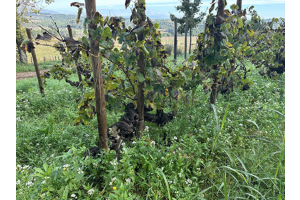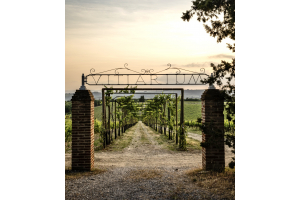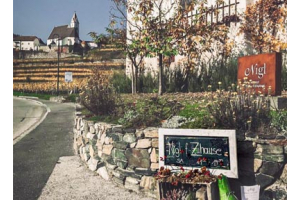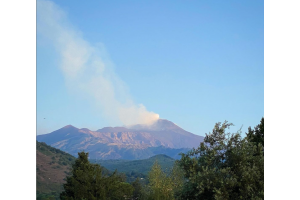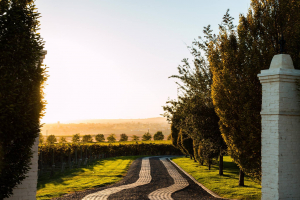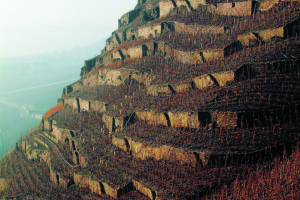The Penedès wine region is one of Spain's most economically vital and culturally distinctive viticultural landscapes. Nestled between the Mediterranean Sea and the Montserrat Mountains just 40 miles west of Barcelona, this region is the spiritual home of Spain's Cava sparkling wines. Penedès has cultivated a robust wine economy exporting to over 140 countries while maintaining deep roots in Catalan identity. The region's prominence is evident in Spain's wine hierarchy—while La Rioja leads in registered quality wineries, Cava producers (predominantly from Penedès) rank second, highlighting the category's significance within Spanish viticulture. Producing more than 215 million bottles annually and contributing substantially to Spain's position as the world's second-largest wine exporter by volume, Penedès functions as a crucial economic engine that benefits both Catalonia and Spain while consistently pioneering organic practices and championing indigenous grape varieties. Beneath the harmonious façade of Spain's wine industry lies a complex interplay between Catalan regional identity and Spanish national interests, with historical tensions occasionally surfacing through cultural expressions, marketing choices, and even export strategies.
A History Etched in Limestone
The history of winemaking in Penedès predates recorded history. As Ramon Parera of Celler Pardas notes, "Here, like many places in the Mediterranean area, traditional wine is lost in time. We have discovered grape seeds that are very old, from before Roman times. We are in a place where you can feel and smell wines from thousands of years ago."
The Raventós family, one of the region's most storied winemaking dynasties, has documentation of their viticultural activities dating back to 1497. But even they acknowledge deeper roots. As Pepe Raventós explains, "I like to think that before that, because we are in the Mediterranean basin where everything started about 5,000 years ago... the Phoenicians spread winemaking all over our coasts."
(Josep Raventós Fatjó who made the first sparkling wine in Catalonia)
For much of its recorded history, Penedès followed the common Spanish pattern of producing bulk wines for local consumption. However, a pivotal moment came in 1872 when Spain's first méthode champenoise sparkling wine was made, laying the foundation for what would eventually become Cava, Spain's renowned sparkling wine.
 "What made the farm famous is that in 1872, Josep Raventós Fatjó, the grandfather of my great-great-grandfather, made the first Spanish method champenoise, or classic method, or second fermentation in the bottle," explains Pepe Raventós, highlighting the family's central role in establishing what would eventually become Spain's signature sparkling wine, Cava.
"What made the farm famous is that in 1872, Josep Raventós Fatjó, the grandfather of my great-great-grandfather, made the first Spanish method champenoise, or classic method, or second fermentation in the bottle," explains Pepe Raventós, highlighting the family's central role in establishing what would eventually become Spain's signature sparkling wine, Cava.
(An old advertising poster for Cava in Penedès at the Vinseum)
The French prohibition on the use of the term "Champagne" for Spanish sparkling wine served as a catalyst for the creation of the Cava appellation. In the early 20th century, as international trade agreements strengthened protections for geographical indications, French producers successfully lobbied to restrict the term "Champagne" exclusively to sparkling wines produced in the Champagne region of France using specific methods. This legal pressure forced Spanish producers, particularly those in Catalonia who had been producing méthode champenoise wines since the late 19th century, to develop their own brand identity. The result was the establishment of the Cava Denominación de Origen (D.O.) in 1972. Rather than viewing this as a setback, Spanish winemakers embraced the opportunity to highlight their unique terroir, indigenous grape varieties like Macabeo, Parellada, and Xarel-lo, and distinguish their wines from Champagne, ultimately allowing Cava to develop its own reputation in the global wine market.
By the 1980s, Cava hit its stride internationally as Spanish producers significantly expanded production capacity and export markets, particularly benefiting from Spain's entry into the European Economic Community in 1986. This decade saw Cava emerge as a recognized global category, with brands like Freixenet and Codorníu leading an export boom that positioned Cava as an economically accessible alternative to Champagne. Consumer recognition grew as Cava established itself as a versatile sparkling wine with a distinctive Spanish character, achieving a commercial success that would continue to build in subsequent decades. Ramon Parera describes this transition: "The tradition here has been mainly sparkling wine - 80-85% of the region is sparkling wine, Cava. It all began seriously in the 1980s when the Cava appellation became established. Before that... it was basically bulk wines, like in many places in Spain."
 The economic footprint of the Cava industry extends far beyond vineyard boundaries, serving as a crucial economic engine for Catalonia and contributing significantly to Spain's agricultural exports. With annual production exceeding 250 million bottles and export values surpassing €1.2 billion, Cava represents approximately 18% of Spain's total wine exports by value. The industry directly employs over 30,000 people across vineyards, production facilities, and distribution networks, while indirectly supporting thousands more jobs in adjacent sectors including tourism, hospitality, packaging, and transportation. The large producers like Freixenet and Codorníu have evolved into multinational enterprises with facilities in multiple countries, though their economic centers remain firmly rooted in Penedès.
The economic footprint of the Cava industry extends far beyond vineyard boundaries, serving as a crucial economic engine for Catalonia and contributing significantly to Spain's agricultural exports. With annual production exceeding 250 million bottles and export values surpassing €1.2 billion, Cava represents approximately 18% of Spain's total wine exports by value. The industry directly employs over 30,000 people across vineyards, production facilities, and distribution networks, while indirectly supporting thousands more jobs in adjacent sectors including tourism, hospitality, packaging, and transportation. The large producers like Freixenet and Codorníu have evolved into multinational enterprises with facilities in multiple countries, though their economic centers remain firmly rooted in Penedès.
(A model of monks making wine in Penedès at the Vinseum)
The industry's economic structure reveals a fascinating dichotomy between the few large producers who dominate volume production and the growing number of artisanal wineries pursuing premium market segments. While the former contributes most significantly to employment figures and export volume, the latter increasingly drives innovation, quality perception, and price appreciation in international markets. This bifurcation is reflected in regional development patterns, with industrial-scale production concentrated in areas like Sant Sadurní d'Anoia, while boutique producers gravitate toward higher elevation sites with distinctive terroir characteristics. Yet the commercial success of Cava would eventually create tension between mass production and artisanal quality, setting the stage for the region's contemporary renaissance.
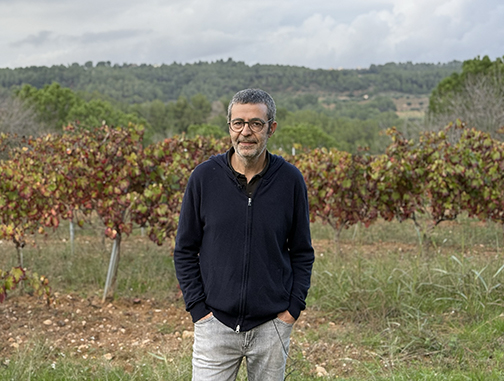 A Landscape of Opportunity
A Landscape of Opportunity
The physical geography of Penedès plays a crucial role in its viticultural identity. The region spans from the Mediterranean coastline to the foothills of the Montserrat Mountains, creating a diverse range of microclimates and soil types.
(Ramon Parera of Celler Pardas)
"Penedès is a big region. We're talking about thousands of hectares," explains Ramon Parera. "Penedès starts in front of the sea and reaches the Montserrat Mountains, so it's very wide."
This geographical diversity creates distinct growing zones, each offering different possibilities for vineyards. Marta Casas of Parés Baltà describes three main areas: "The Penedès wine region has three main parts: the flattest part, which is the biggest, and historically connected to the wine industry here, including Cava production. Then there are the special areas: the coastline, the mid-altitude region, and the high-altitude areas, at 700 meters above sea level."
The geology of Penedès is equally significant, particularly its limestone-rich soils—a legacy of the region's ancient marine history. Pepe Raventós explains: "To understand the potential of Xarel·lo and Sumoll and in general any wine in this territory it is very important to understand its geology... We learned that the most important moment in history is 20 million years ago, when all northern Penedès was covered by the ocean."
This geological history created the fossilized limestone soils that define the region's terroir. The varying elevations and proximity to rivers further diversify the landscape. Pepe Raventós describes how the River Anoia "carved and created the terraces, the different terraces and different altitudes where we're making the wines."
These natural advantages create what Pepe Raventós calls "one of the most gifted wine regions in the world" and "still today, the land of opportunity."
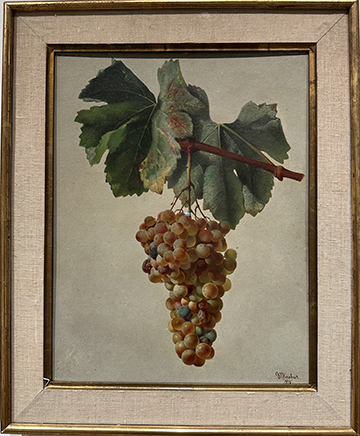 Indigenous Treasures: The Grapes of Penedès
Indigenous Treasures: The Grapes of Penedès
Central to the contemporary story of Penedès is the rediscovery and celebration of indigenous grape varieties. For generations, the region was known for three primary white grapes used in Cava production: Xarel·lo, Macabeo, and Parellada. Today, forward-thinking producers are exploring the full potential of these native varieties, particularly Xarel·lo for white wines and Sumoll for reds.
(A painting of the Xarel·lo grape in Penedès at the Vinseum)
Pepe Raventós is particularly passionate about Xarel·lo's potential: "In my opinion, on top of the white grape pyramid is the Xarel·lo. The Xarel·lo has been dragged down by the inertia of cheap Cava, and that's why people don't recognize its power. But it's right on the top."
He elaborates on what makes this grape so special: "Not only is Xarel·lo so well adapted to Penedès that it is providing us with these extremely fresh wines, it's also one of the grapes in the world that concentrates more resveratrol, which is responsible for anti-oxidation. So that means that this grape has an amazing aging potential."
Another characteristic that makes Xarel·lo ideal for expressing terroir is its restraint in primary aromas: "It's quite austere in terms of terpenes, in terms of primary notes, fruit and flower notes. That means that it gives the protagonist to the roots, and it really lets the terroir speak in a very profound way."
For red wines, Sumoll is experiencing a similar resurrection. Once widely planted but later nearly abandoned due to its challenging nature, this native variety is now being championed by producers like Pepe Raventós and Ramon Parera.
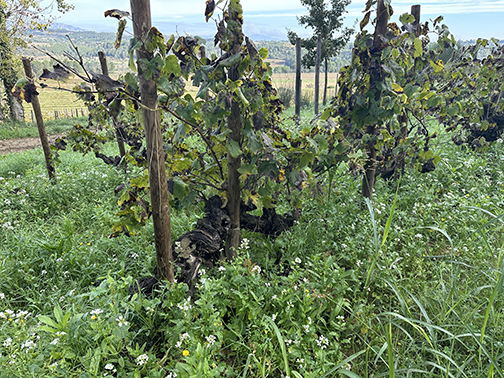 "Sumoll is the red grape, indigenous or local to this territory such as Xarel·lo is our amazing white grape," explains Pepe Raventós. "Sumoll is an incredible qualitative red grape that has lost a lot of track because of two things, mainly because it's very difficult to farm. It has a lot of tannins. It has a lot of sensitivity to rot, and also a lot of sensitivity to oxidation."
"Sumoll is the red grape, indigenous or local to this territory such as Xarel·lo is our amazing white grape," explains Pepe Raventós. "Sumoll is an incredible qualitative red grape that has lost a lot of track because of two things, mainly because it's very difficult to farm. It has a lot of tannins. It has a lot of sensitivity to rot, and also a lot of sensitivity to oxidation."
(Vines at the Raventós estate in Penedès)
Despite these challenges, dedicated producers are bringing Sumoll back: "Sumoll is the Catalan Nebbiolo - low color, high tannins, amazing aging potential grape. And although it has never been vinified in technique effort, I think it's going to come back with a lot of strength."
Beyond these two cornerstone varieties, winemakers are also reviving other ancient grapes. Ramon Parera describes his work with Malvasia de Sitges: "Here we work with a very old grape called Malvasia de Sitges. You know Malvasia - they all came from Greece. The story of Malvasia de Sitges is quite incredible because there are only two hectares in Sitges. It nearly disappeared because of its difficulty."
Marta Casas notes that climate change is reinforcing the value of these native varieties: "In recent years, we've focused on native varieties to better adapt to climate change. Native grapes tend to have lower sugar content and higher acidity, ideal for sparkling wines."
The Evolution of Cava and the Artisanal Renaissance
Sparkling wine in Penedès has followed a dramatic arc: first achieving commercial success, then experiencing a quality-focused rebellion. After the Cava appellation was established in the 1970s, large producers dominated the market, making Cava Spain's signature sparkling wine export. In 2023, Cava accounted for 10% of EU sparkling wine exports, representing approximately 60 million liters of the total 604 million liters exported. However, regulatory changes in the 1990s would eventually cause a split among producers.
"In the 1990s, Cava was exclusively produced here in Penedès," explains Ramon Parera. "But then officials decided that several places across Spain could produce Cava. Many artisanal producers opposed this change because it suggested that the specific region didn't matter—they were merely selling a production method."
This expansion of the Cava appellation beyond Penedès diluted the connection between the wine and its traditional homeland. The appellation became more about methodology than terroir, prioritizing mass production over sense of place. As Pepe Raventós notes, "Cava transformed into something it wasn't meant to be—affordable Spanish sparkling wine that no longer truly represented the culture, winemaking traditions, and unique characteristics of northern Penedès." A 2016 report estimated that just three producers—Freixenet, Codorníu, and García Carrión (Jaume Serra)—account for 95% of all D.O. Cava sales.
In response, "Classic Penedès" emerged in 2012 as a distinctive sparkling wine category that proudly emphasizes Catalan winemaking identity. This classification exists within D.O. Penedès and was created by producers who deliberately separated from the Spanish Cava D.O. Classic Penedès requires all wines to be organic and estate-bottled. Every wine must be vintage-dated, include its disgorgement date on the label, and age for at least 15 months. Unlike Cava, which can now be produced throughout Spain, Classic Penedès is restricted exclusively to Catalonia's Penedès region, emphasizing local terroir. These sparkling wines feature native Catalan grapes like Xarel·lo, Macabeo, and Parellada, though producers have more freedom to experiment with grape varieties than under Cava regulations.
In 2012, the Raventós family made the bold decision to leave the Cava D.O., believing that mass production had undermined the authentic expression of the region's terroir and native grape varieties. Raventós then established the a "Conca del Riu Anoia" appellation which is focused on a specific, small geographical area around the Anoia River Valley in eastern Penedès. This move foreshadowed a larger rebellion that would form in 2017 with the creation of Corpinnat.
Ramon Parera describes this new collective: "In 2017, several artisanal wineries left Cava and formed a group called Corpinnat, which etymologically means 'born in the heart of Penedès.'" The requirements for membership are "straightforward but demanding," including organic certification, estate-grown grapes (primarily native varieties), and extended aging.
This movement represents a return to a terroir-focused approach. As Parera explains, "We're spreading the message that our place makes the wine, not just the method. Corpinnat emphasizes location over production technique."
Alongside this sparkling wine revolution, still wines have experienced their own renaissance in Penedès. Traditional grape varieties once valued merely as components in sparkling blends are now being used to produce sophisticated still wines in their own right.
Parera describes how his generation bridges old and new thinking: "When I started, I sold all my grapes to large companies, but then I decided to make my own wine. This approach began here in the late 1990s. Winemakers before me thought great red wine required Merlot or Cabernet Sauvignon. When my generation appeared, we said, 'That may be true, but we want to focus on our own native grapes.'"
This shift has created new opportunities for Penedès' indigenous varieties. "From the beginning, we said, 'Xarel·lo is traditionally a Cava grape, but we want to produce premium white wine that can compete with the world's finest.' For the first time, we wanted to use these old vineyards to create top-quality white wine with aging potential."
 Embracing Natural Viticulture
Embracing Natural Viticulture
Another significant trend in Penedès has been the widespread adoption of organic and biodynamic farming methods. According to Marta Casas, "In 2025, Penedès will become the first wine region in the world to be 100% organic. This is incredibly significant for farming and viticulture here because we have the perfect conditions to apply organic and even biodynamic methods." According to a D.O. Cava report, in 2023 sales of organic Cava in the Cava D.O. increased 24%.
(The making of biodynamic preparations at Parés Baltà)
Ramon Parera confirms this leadership position: "I think Penedès is the most important region in Spain in terms of organic vineyard surface. In my opinion, there's no excuse not to be organic because our climate allows for it. We're not in Galicia where rainfall and fungus are a nightmare. We're not in Champagne. We're in a Mediterranean area. We enjoy hot summers. So organic farming here is affordable and important for us."
Pepe Raventós describes his approach as recovering "the ancient farm that has belonged to our dear Mediterranean farming, Penedès farming, cattle farming where animal, man and plant live together in a very, I would say, respectful and cooperative way."
His philosophy centers on biodiversity: "The more diversity there is in the system, the more resistant will be these plants, the more unique will be the grapes of these plants. The more honest to the place will be the grapes that these plants are going to give us."
Marta Casas, who transitioned from a career as a pharmacist to become a winemaker at her family winery, describes how biodynamics has influenced her approach: "Biodynamics has deepened my connection to nature and the rhythms of the cosmos. Initially, as a scientist, it felt like a mix of spirituality and agriculture, but I quickly realized how complementary it is to science."
She notes that biodynamic farming isn't simply a modern trend but rather a return to traditional wisdom: "My husband's grandfather farmed organically long before it became a trend. He believed in working with nature, though he didn't label it as biodynamic. Now, we combine his principles with modern knowledge, ensuring that both innovation and tradition shape our wines."
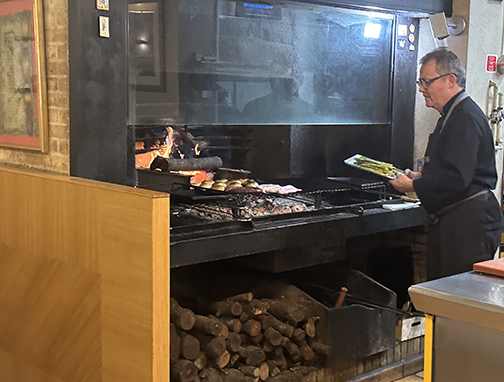 The Catalan Identity in Wine
The Catalan Identity in Wine
Wine in Penedès is inseparably linked to the broader Catalan cultural identity. Catalonia has a distinct language, traditions, and cultural heritage that differentiate it from the rest of Spain, and this regional identity is expressed through its wine culture.
(Traditional Catalan food at Cal Xim)
Pepe Raventós describes how authentic Catalan culture can be found in the countryside surrounding Barcelona: "A lot of people travel to Barcelona lately, and Barcelona has become really an attraction... However, I always see that people miss out on the Catalan culture and the belt between one and two hours around Barcelona. And that's where you really feel that in depth, the Catalan culture. Because it has been kept for generations. It's not been diluted by the gentrified power of the city."
He paints a vivid picture of this rural Catalan culture: "This is where you go to a restaurant and still the old people are having lunch with a bottle of a three-year-old Brut Nature sparkling wine from the territory. This is where the local gastronomy takes place. This is where people celebrate with human castles. This is where the sardanas dancing is still in the village celebration on a yearly basis."
For Raventós, winemaking is deeply connected to this cultural heritage: "So it's inside this type of Catalan culture I grew up where maybe the winemaking gets a certain sense in this link and in a way to share it with the world, these Catalan roots that are very deep inside the territory and inside the families that we have left in the territory."
Ramon Parera notes how he explains the region's location to international audiences: "When you are traveling and spreading your message and selling your wine in many places, of course you have to explain where you are located. Many people say, 'Ah, you are from Spain,' but Spain is a big country. They don't know much about Spanish geography, but they know Barcelona. So, if I have to explain where Penedès is, I say, 'Northeast Spain, 40km south of Barcelona, that's Penedès.'"
Many Catalan winemakers are proud of their distinct regional heritage and terroir, which is closely tied to Catalan cultural identity. However, they also rely on Spanish distribution networks and Spanish consumers for a significant portion of their sales, creating a business dilemma.
Some of this dilemma is found in the labeling choices wineries make and whether to use Catalan, Spanish, or both on wine labels and marketing materials. Raventós i Blanc for example uses Catalan language prominently in its branding. They use Catalan terminology for their wine classifications such as "de la Finca" (from the estate) rather than the Spanish "de la Finca" or international designations. They also use Catalan viticultural terms to describe their wines, such as "Conreu Ecològic" (organic farming) rather than the Spanish "Cultivo Ecológico."
There exists a tension between expressing Catalan regional identity and maintaining good relationships with Spanish distributors and consumers. Grape Collective spoke to a Spanish wine professional who requested he not be named in this article about the tension in the wine industry between the Spanish and Catalans. "Following the 2017 problems (Catalan declaration of independence was a resolution that was passed by the Parliament of Catalonia on 27 October 2017 which was not acknowledged as legal by the Spanish government), Spanish people stopped buying Catalan products including wine. This forced the Catalans wine community to develop export markets (in 2023 exports represented 70% of DO Cava sales)." He recalled visiting a wine fair in Catalonia where some producers refused to speak Spanish to him. Today he feels tensions are more relaxed, though most people stay away from talking about politics when business is involved.
 The Future of Penedès
The Future of Penedès
Today, Penedès stands at a fascinating crossroads of tradition and innovation. While large Cava houses continue to drive the region's commercial reputation, small artisanal estates are rewriting its qualitative legacy, bottle by bottle.
(A photograph of a vineyard worker in Penedès at the Vinseum)
In global wine markets, Cava occupies a strategic middle position between premium-priced Champagne and the more accessible Prosecco, offering consumers a compelling quality-to-price ratio that has fueled its international expansion. While Champagne maintains its luxury status with average retail prices of $40-80 per bottle, and Prosecco dominates the entry-level segment at $9-18, Cava strategically occupies the $15-35 range, offering traditional method sparkling wines at prices significantly below equivalent Champagne. This positioning has proven particularly successful in markets like the United Kingdom, Germany, and the United States, where value-conscious consumers appreciate Cava's complexity without the premium price associated with Champagne. Industry data reveals that Cava exports have grown steadily at 5-7% annually over the past decade, even as the category faces intensifying competition from Prosecco, which saw explosive growth of over 20% in many markets during the same period.
The emergence of quality-focused organizations like Corpinnat has added a new dimension to Cava's market positioning, creating a premium sub-category that directly challenges Champagne in quality while maintaining a price advantage. These artisanal producers have successfully entered fine dining establishments and specialized wine retailers in key global markets, commanding prices of $30-50 per bottle—territory once exclusive to entry-level Champagne. Their success has been bolstered by growing consumer interest in indigenous grape varieties and organic production methods. This evolving market segmentation has allowed the broader Cava category to play in multiple price tiers simultaneously, with mass-market brands competing on accessibility while artisanal producers elevate the category's prestige among connoisseurs and sommeliers, collectively strengthening Spain's position in the global sparkling wine landscape.
Ramon Parera expresses hope that perceptions of the region will evolve: "I hope that in the future, people won't just think about Penedès in terms of industrial sparkling wineries. I'd like them to think of still wines made with traditional grapes. Penedès now, like all over Spain, has rediscovered its soils and grapes. They were there for centuries, but it's only been 25 years that we've been proud of this heritage."
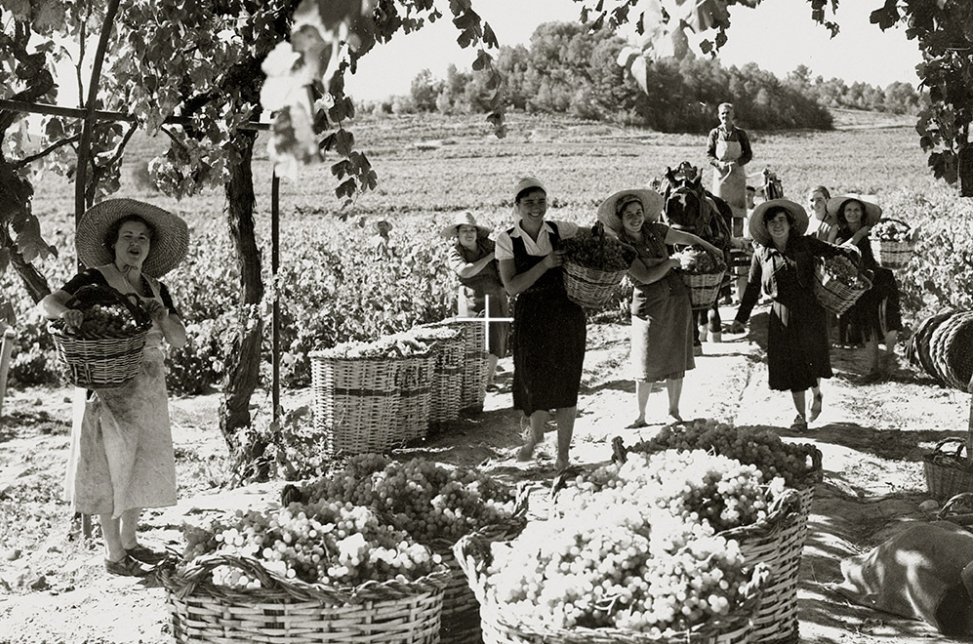 Pepe Raventós shares a similar vision: "I dream of a Penedès, of Xarel·lo and Sumoll, where the valleys and the villages and the vineyards are going to be the true protagonists." He's working to create a new appellation that emphasizes place over brand, highlighting "the valleys, the villages, and the vineyards" rather than winemakers or large companies.
Pepe Raventós shares a similar vision: "I dream of a Penedès, of Xarel·lo and Sumoll, where the valleys and the villages and the vineyards are going to be the true protagonists." He's working to create a new appellation that emphasizes place over brand, highlighting "the valleys, the villages, and the vineyards" rather than winemakers or large companies.
(The Raventós family hold claim to being the longest, documented viticulture tradition owned by the same family in Europe)
His vision includes supporting local farmers through fair pricing and sustainable practices while preserving Catalan culture: "So I am super optimistic about the future of Penedès. I think because it has been dull for maybe the last 30 years, now it's a land of huge opportunity."
Marta Casas sees climate change as both a challenge and an opportunity for the region to leverage its indigenous varieties and sustainable practices: "Native grapes tend to have lower sugar content and higher acidity, ideal for sparkling wines. Climate challenges, like heatwaves and drought, are significant, but the proximity to the sea helps by providing cool breezes."
After thousands of years of continuous viticulture, Penedès is experiencing what might be its most significant renaissance—not by looking outward for inspiration, but by rediscovering the profound viticultural heritage that has always existed in its soils, climate, and native grape varieties. The region's winemakers are proving that by honoring their past, they can create an even more promising future.
As Pepe Raventós eloquently states, "The way, the future for the territory is really to move away from the taste of Chardonnay, Pinot Noir and fruit and be more on the Xarel·lo and Sumoll, with that similar aging capability, but a more mineral, more salty, more dirty farming expression to the wines... And I think this is the way that Penedès has a strong future to really put on the table the really strong mineral saline expression of sparkling wine."
From the rebirth of nearly forgotten native varieties to the formation of quality-focused collectives like Corpinnat, from the widespread adoption of organic farming to the celebration of authentic Catalan culture, Penedès is writing an exciting new chapter in its ancient winemaking story—one that honors tradition while boldly embracing innovation.
----
Places to visit:
Vinseum, the Museum of Wine Cultures of Catalonia
Plaça Jaume I, 1-5, 08720
Vilafranca del Penedès, Spain
https://vinseum.cat/
Celler Pardas
Finca Can Comas, 08775
Torrelavit, Spain
https://cellerpardas.com/
Parés Baltà
Masia Can Baltà, s/n – 08796
Pacs del Penedès, Spain
https://paresbalta.com/
Raventós
Pl. del Roure, s/n. 08770
Sant Sadurní d'Anoia
Restaurants to visit:
Cal Xim
A favorite of the local winemakers. Inspiring Catalan food with an emphasis on cooking with fire. Extremely affordable considering the quality of the food.
Subirats Square, No. 5
08739, Sant Pau d'Ordal
https://www.restaurantcalxim.com/
Cal Ton de Vilafranca del Penedès
Carrer del Casal, 8, 08720 Vilafranca del Penedès, Barcelona, Spain,
del, Carrer de la Fruita, 12, 08720
Vilafranca del Penedès
https://www.elconvent.cat/en/restaurant-3/






